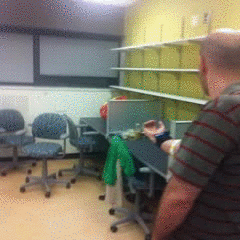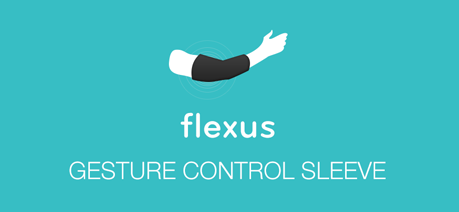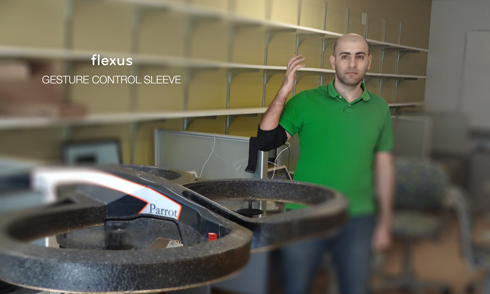This is an old revision of the document!
Table of Contents
Pragmatix
Flexus - Gesture Control Sleeve
Video
Group Members
Aysar Khalid, Computer Engineer,

Project lead. Oversees material science engineering aspects of the project such various fluid and solid to be used for tests. In addition, system apparatus building/shielding and data communication protocols.
 Hassan Chehaitli, Computer Engineer
Hassan Chehaitli, Computer Engineer
Oversee hardware engineering aspects of the project such as circuit design, part research and hardware development. In addition, aids in system apparatus building.
 Mohammad Aryanpour, Space Engineer,
Mohammad Aryanpour, Space Engineer, 
Develops interfacing and application development that will receive, process, analyze and display data. In addition, composes documentation for research.
Project Adviser & Course Director: Professor Ebrahim Ghafar-Zadeh Mentors: Mourad Amara, Giancarlo Ayala-Charca
Description of Project
Flexus lets you use the electrical activity in your muscles to wirelessly control your computer, phone and other digital technologies. With the wave of your hand, it will transform how you interact with your digital world. The past four years, wearable technology sales have risen to $60b paving the way for an emerging market. Gesture control allows data from muscular activity to be translated to different commands for electronic devices. On an aggregate level, the Flexus has the capability of being a universal remote that can interact with multiple electronic devices.
In the age of wearable technology, humans are constantly owning more than three devices but are limited by their pace of interaction, the Flexus attempts to resolve this in a human way with less interactions.
Images ( Setup/Schematics/Results)
Achieved results
Controlling a drone via Flexus.


The Flexus Alpha version is made possible by:
SOFTWARE
- A java client application that interfaces between Arduino and Pusher.
- iOS app that acts as a server and aggregates all data from sensors (EMG and motion) and processes it for sending
HARDWARE
- Arduino Uno is used to get input from EMG sensor.
- iPhone, provides connectivity with target device (Wi-fi, BLE)
SENSORS
- EMG sensing prototype
- iPhone CoreMotion Framework: three-axis gyroscope, accelerometer
POWER
9V Battery (2)
Discussion
Key to its design is the ability of modularity. It can take multiple inputs from multiple sensors and act on it due to its client/server multicast architecture.
Market
The market for business to consumer (B2C) wearable technology is emerging and ripening to become as large as today's smartphone market. As people are evermore interacting with the increasing amount of devices, their capacity to interact at the same time is limited. We believe the Flexus will further increase user device interactivity by allowing for fluid, friendly gestures to be recognized and sent in real time to 3rd party devices.
We estimate the Flexus to retail at $150 once it has been finalized and ready for public release. Our costs to produce it would be about $60, taking into account a mass production line and administrative costs.
Future
The future for the Flexus will be in its ability to interface with more 3rd party devices. To permit our userbase to interact with more of their daily devices. Devices such as media players, gaming, and automotive are all commonplace potential for a device such as the Flexus.
With the added ability to interact with more devices simultaneously, this means we need to be able to recognized multiple gestures.
Conclusion
The Flexus sleeve has been demonstrated to recognize gestures in real-time allowing for fluid device interaction.. Using a prototyped EMG sensing circuit for muscle activity data and the iPhone’s three-axis accelerometer and gyroscope. The Flexus communicates to 3rd party devices via Wi-Fi such as the AR Drone or other media player devices.
As people are evermore interacting with the increasing amount of devices, their capacity to interact at the same time is limited. We believe the Flexus will further increase user device interactivity by allowing for fluid, friendly gestures to be recognized and sent in real time to 3rd party devices. In essense, simplifying the interactions between people and devices.
Funding
Latest Presentation
- Presentation Jan. 7th, 2013 eng4000-demoday1.ppt
- Presentation Oct 25, 2013 eng4000.ppt
- Presentation Sept 25, 2013 eng4000_1st_presentation.pdf












